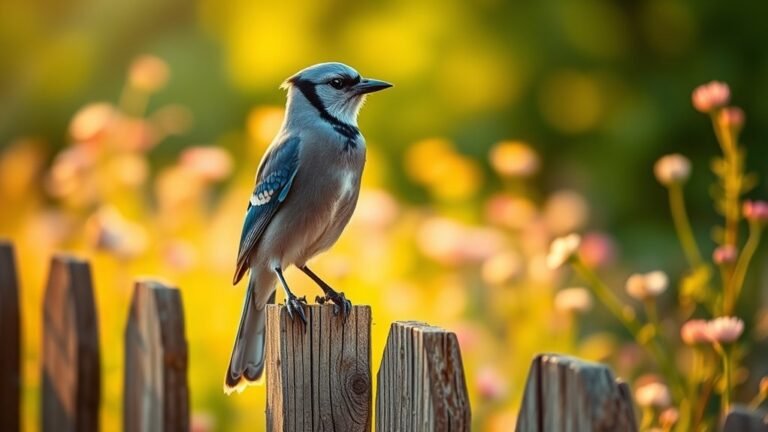Owls Found in South Carolina: A Guide
Owls in South Carolina are amazing birds. They have special features that help them live in different places. For example, the Great Horned Owl and the Barred Owl are great at finding food and making homes in various habitats.
Owls hunt at night, and they have unique ways to communicate with each other. Learning about their habits and how they catch their food can be fun and interesting. However, some owls face problems like losing their homes due to human activities.
You might wonder how you can help these beautiful birds. Simple things like planting trees, keeping the environment clean, and spreading the word about protecting owls can make a difference. Let's support these incredible creatures and their homes!
A Quick Overview
South Carolina has many types of owls. Some of the most common include the Great Horned, Eastern Screech, Barred, Barn, and Long-eared Owls. Each kind has its own special features.
The Great Horned Owl is easy to spot. It has big tufts that look like ears. This owl can live in cities and woods, so you might see it in different places.
Eastern Screech Owls are small and good at hiding. They blend right in with the trees. You can hear their unique calls, which help them communicate and mark their territory.
Barred Owls have round faces and striped feathers. They mostly live in areas with big hardwood trees, like swamps. These owls are important for the environment around them.
Barn and Long-eared Owls need our help. They face challenges because their homes are disappearing. We must work to protect their habitats and use farming methods that keep these owls safe.
By learning about these owls, we can enjoy nature and help make sure they stay safe in South Carolina.
Overview of Owls in South Carolina

Owls are often seen as wise birds, and they're very important in South Carolina. You can find different kinds of owls living in many places, like wetlands and pine forests. Learning about where owls live helps us understand how they fit into nature.
Owls hunt at night and have special calls to communicate. They mostly eat small animals and insects, which helps keep pests away. Watching how owls build their nests and defend their territory can deepen your connection with nature.
Talking with others about owls can bring everyone together to appreciate these amazing animals. This can help us feel more connected to our local environment.
Take the time to learn more about the owls in South Carolina; it can be a fun adventure!
Great Horned Owl
The Great Horned Owl is one of the coolest owls in South Carolina. You can recognize it by its tufted ears and strong presence. These owls live in many places, like forests and cities. They're very good at adapting to their surroundings.
Watching Great Horned Owls in action is exciting. They're skilled hunters and make loud calls to mark their territory. They can scare off smaller birds of prey, showing just how powerful they are. Their diet mostly includes small mammals and birds, which helps keep their environment balanced.
Great Horned Owls like to nest in tree holes or old buildings, where they feel safe and can find food nearby. Learning about their habits and where they live can make your time as an owl fan even more fun.
Plus, it helps you feel closer to the natural beauty of South Carolina.
Eastern Screech Owl

The Eastern Screech Owl is special in South Carolina. This small owl is good at adjusting to different places. You can find it in woods and even in neighborhoods. Its feathers look like tree bark, helping it hide very well.
When it comes to sounds, this owl makes unique trills and whinnies. These calls are different from other nearby owls. They use their voices to claim territory and attract mates, often calling out during the night.
The Eastern Screech Owl can live in many different environments, showing how tough it is. Watching this owl helps you learn more about the birds in South Carolina and connect with nature around you.
Barred Owl
The Barred Owl is easy to spot if you look near wetlands and thick forests. This owl has a round face and brown feathers with cool patterns.
In South Carolina, you can find it in places like hardwood swamps and along riverbanks. These areas are perfect for hunting small animals and birds, which are their favorite snacks.
If you listen at night, you might hear their famous calls that sound like "who cooks for you." These sounds fill the night air and are a clue that Barred Owls are nearby.
Learning about how they live and where they stay helps us appreciate these amazing birds. This connection makes us feel a part of the exciting wildlife in South Carolina.
Barn Owl

Barn Owls like open fields and farms. You can see them flying quietly above the grass, looking for small animals like mice and rats. Their face is shaped like a heart, which helps them hear better and find food.
Unfortunately, Barn Owls face dangers. They lose homes when forests are cut down or when farms use too many chemicals. This is why it's important to help protect them.
You can support Barn Owls by encouraging farmers to use safe practices that are good for wildlife. Keeping their homes safe helps Barn Owls survive.
Learning about these interesting birds helps you appreciate nature more. Together, we can protect Barn Owls and make sure they stay around for a long time.
Long-eared Owl
Long-eared Owls are easy to spot because of their big ear tufts. These tufts help give them their unique owl look. They like places with plenty of cover, such as thick forests and shrubby areas.
If you want to find them, keep these things in mind:
- Location: You can often see them in woodlands, especially close to open fields.
- Diet: They mainly eat small animals like voles. Long-eared Owls usually hunt at dusk to catch their food more easily.
- Nesting: They often use old nests from other birds. Their colors help them blend in with their surroundings.
Knowing where Long-eared Owls live and what they eat can help you appreciate how they fit into nature.
If you're patient, you might see one sitting quietly, watching over its area with sharp eyes. Just remember to give them space!
Short-eared Owl
If you're in open grasslands or marshes, look for the Short-eared Owl. This owl has a round face and short ear tufts, making it easy to recognize. It likes areas with low plants and can be seen flying during the day, which is different from most owls that fly at night.
The Short-eared Owl enjoys wide, open spaces. It uses its sharp eyesight and great hearing to find food. It often flies low and glides over the ground, searching for small animals, especially voles. Sometimes, you might see it hover in the air while hunting.
Watching this owl can help you feel closer to the wildlife in South Carolina and appreciate the different ecosystems it calls home.
Burrowing Owl
You might see the Burrowing Owl in open fields, grasslands, or prairies.
This owl is special because it makes its home in burrows. It often uses old homes of animals like prairie dogs.
These owls like wide spaces with not much grass or bushes. This helps them see better and find food more easily. They hunt small animals and bugs while walking on the ground.
Birdwatchers and conservationists should know about the Burrowing Owl's favorite spots to help keep them safe.
Identification Tips
To identify a Burrowing Owl, look for some unique features and behaviors. These small owls are about 9 to 11 inches tall. They've long legs and a round head. Check out their bright yellow eyes and white eyebrows; they make them look curious.
Listen for their calls, especially around dusk. They sound like low-pitched coos or chattering.
Even though they're awake at night, you might see them during the day. They like to sit on fence posts or come out of their burrows.
Watch how they act. Burrowing Owls can be playful. When they get startled, they often hop or run instead of flying away. This fun behavior can help you spot them easier!
Best Locations for Owl Watching
If you love owls, South Carolina is a great place to watch them. You can find them in spots where there are open fields and trees. The best times to see owls are at dusk and dawn because that's when they're most active.
Here are some good places to check out:
- Congaree National Park: This park has a lot of different trees and plants, making it a home for many types of owls.
- Francis Marion National Forest: The thick woods here provide great places for owls to nest.
- Santee Cooper Lakes: The wetlands around these lakes bring in lots of wildlife, including owls.
Visiting these spots not only increases your chances of seeing these amazing birds but also lets you connect with other people who enjoy nature.
Enjoy your owl-watching adventure!
Frequently Asked Questions
What Is the Best Time of Year to See Owls in South Carolina?
The best time to see owls in South Carolina is during late fall and winter. At this time, owls are most active at night. If you go during these months, you have a better chance of spotting these amazing birds when they are out and about. Just find a quiet spot, listen, and keep your eyes open to enjoy the experience!
Do Owls Migrate or Do They Stay in South Carolina Year-Round?
Some owls stay in South Carolina all year long. Other owls might move to find better food or good places to build their nests when the seasons change. So, while many owls are around all year, some do migrate for different reasons. If you're curious about owls in your area, pay attention to them; you might spot different types during the year!
What Do South Carolina Owls Eat?
In South Carolina, owls hunt at night. They mainly eat small animals like mice and rabbits. This helps keep nature in balance. When owls catch these animals, it helps control their numbers. This way, we can see a healthy mix of wildlife in the area. Keeping the ecosystem balanced is important for all creatures that live there.
Are Any Owl Species Endangered in South Carolina?
Yes, some owl species in South Carolina are in trouble. Their homes are getting smaller because of things like building and logging. This can harm these beautiful birds. It's important to help local groups that work hard to protect owls. They are trying to save these birds and take care of their homes for the future. Getting involved can make a big difference!
How Can I Attract Owls to My Backyard?
To attract owls to your backyard, start by putting up owl houses. These homes should look like their natural spaces. Make sure to place them in quiet spots where owls feel safe.
Next, offer food and water. You can leave out some mice or small birds for the owls to eat. A birdbath or a small pond can give them water to drink.
With these steps, you'll create a welcoming place for owls to visit. Enjoy watching these amazing birds!

Luna is the passionate founder and author of Birds and You, a website dedicated to sharing her love for birds with fellow enthusiasts. Through her engaging articles and guides, she aims to educate and inspire others to explore the fascinating world of birds. When she’s not writing, you can find Luna observing birds in their natural habitats or sharing beautiful bird photography on Pinterest. Join her on this journey to celebrate and protect our feathered friends!







